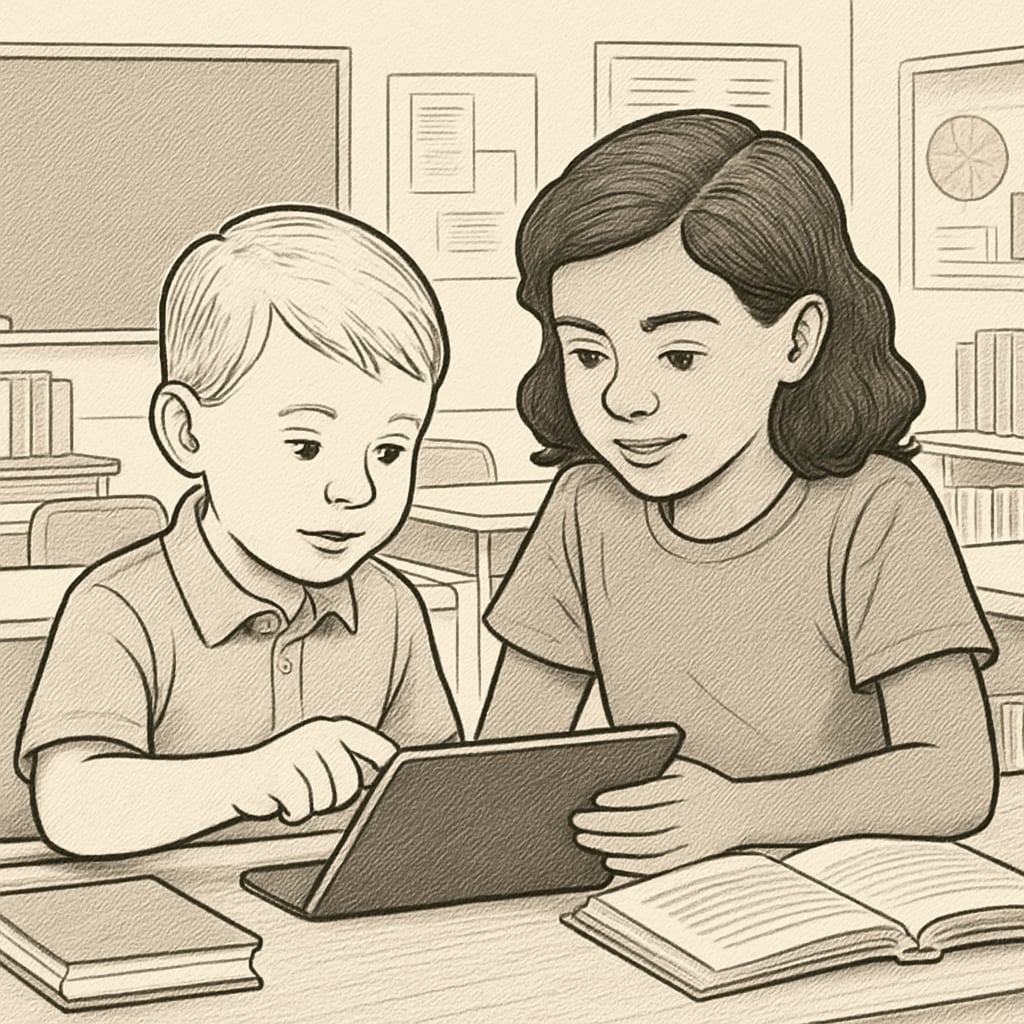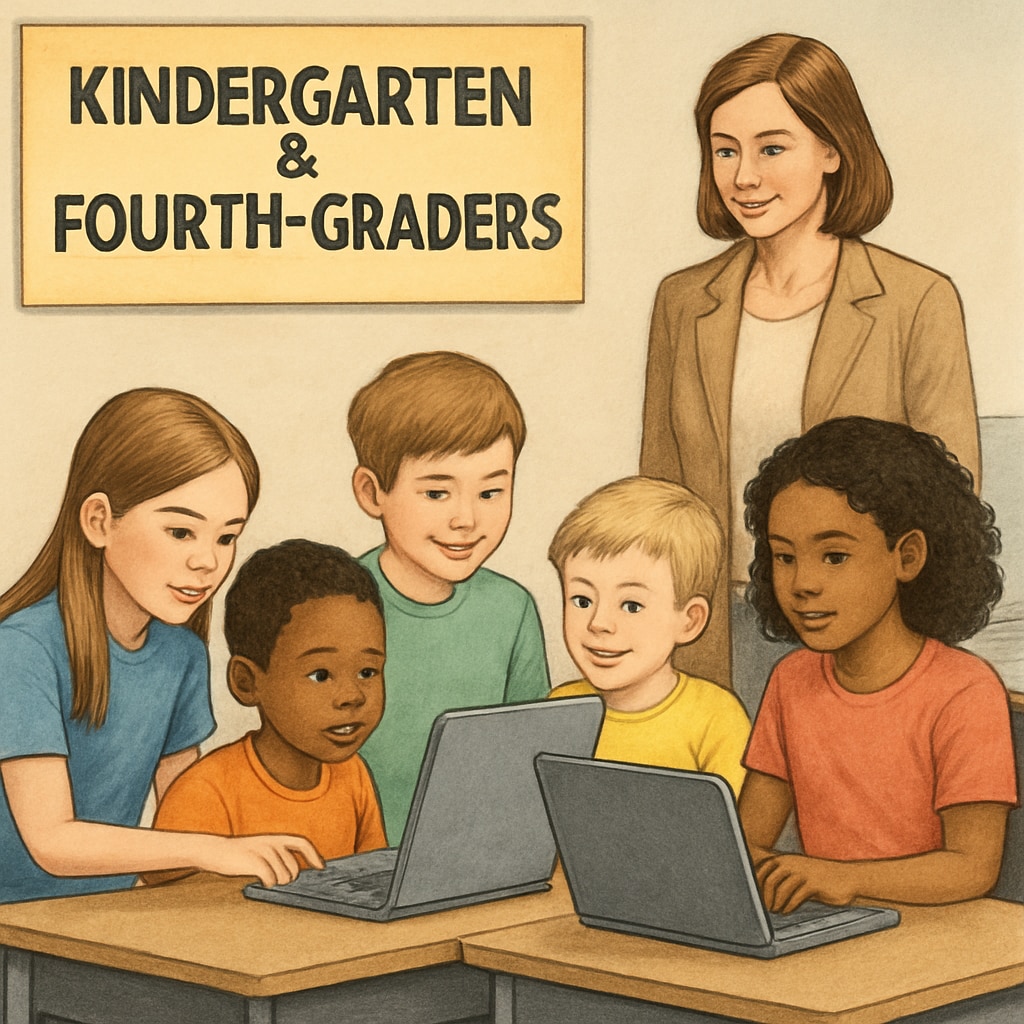Effective educational programs often emphasize collaboration, creativity, and inclusivity. The “kindergarten buddy program,” which pairs young learners with older fourth-grade students, is a perfect example of this approach. By incorporating computer-based activities into these partnerships, educators can create engaging experiences tailored to different literacy levels. This structured yet flexible initiative not only nurtures collaboration and technology skills but also encourages social interaction and empathy between age groups.
The Value of Cross-Age Collaboration in Education
Cross-age collaboration programs have proven to be effective in fostering academic and social development. Pairing kindergarteners with fourth-grade students allows older children to take on mentoring roles, while younger students benefit from personalized guidance and interaction. Leveraging computer-based activities adds a modern twist to this traditional model, introducing both groups to digital literacy and problem-solving skills. This approach also aligns with the increasing integration of technology into early education curricula.

Creative Computer Activities for Kindergarten and Fourth-Grade Partnerships
To ensure the success of a kindergarten buddy program with computer activities, it’s important to select tasks that cater to varied skill levels. Below are some creative ideas:
- Interactive Story Building: Utilize software like Book Creator, where fourth graders can help kindergarteners design simple digital storybooks. Older students can assist with typing, while younger children contribute ideas and illustrations.
- Educational Games: Platforms like ABCmouse or Starfall offer games suitable for younger learners, with fourth graders guiding them through activities to build basic math and reading skills.
- Digital Art Projects: Applications like Paint 3D allow collaborative artwork creation, where older students can teach younger ones about tools and techniques.
- Virtual Field Trips: Explore online museum tours or nature documentaries together, encouraging both groups to discuss what they learn.
- Simple Coding Activities: Platforms like Scratch Jr. introduce coding basics, enabling fourth graders to mentor kindergarteners in creating animations or interactive stories.
Each activity not only builds digital skills but also strengthens bonds between participants, fostering mutual respect and understanding.

Key Benefits of Computer-Based Buddy Programs
Integrating computer-based activities into cross-age partnerships yields numerous benefits:
- Enhanced Digital Literacy: Both age groups become more comfortable using technology, which is crucial in modern education.
- Improved Collaboration Skills: Working together on projects teaches teamwork, communication, and problem-solving.
- Social Development: Younger children learn to interact with older peers confidently, while fourth graders develop leadership and mentoring abilities.
- Personalized Learning: Activities can be adjusted to match each child’s literacy level, ensuring inclusivity and engagement.
As a result, these programs create a dynamic and supportive learning environment that benefits all participants.
Tips for Successful Implementation
To maximize the impact of a kindergarten buddy program, educators should consider the following:
- Plan Structured Sessions: Clearly define objectives for each activity while allowing room for creativity and flexibility.
- Use Age-Appropriate Tools: Choose software and platforms that cater to both kindergarten and fourth-grade skill levels.
- Provide Training: Teach fourth graders mentoring techniques and familiarize both groups with the technology beforehand.
- Monitor Progress: Regularly evaluate the program’s effectiveness by observing interactions and gathering feedback.
- Encourage Reflection: Create opportunities for participants to share their experiences and learn from one another.
With thoughtful planning, these programs can become a cornerstone of modern, collaborative education.
In conclusion, the kindergarten buddy program offers a unique opportunity to bridge age gaps and literacy levels through computer activities. By fostering collaboration, digital literacy, and social skills, these initiatives prepare young learners and older students alike for future success. As technology continues to shape education, programs like these highlight the importance of inclusive and innovative approaches.
Readability guidance: Short paragraphs, bullet points for clarity, and frequent use of transition words ensure the article is easy to follow.


